RESEARCH
|
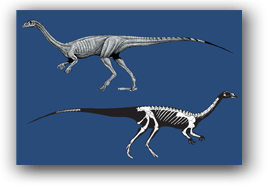 |
Origin of dinosaurs
Some of the oldest dinosaurs were unearthed from some 225
million years old rocks from Rio Grande do Sul, Brazil. The
PaleoLab team researches the phylogenetic and stratigraphic
patterns of the early radiation of dinosaurs.
Saturnalia tupiniquim, a basal dinosaur from the
Brazilian Triassic |
|
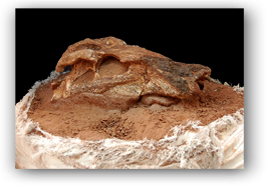 |
Cretaceous Crocodyliformes
During the Late Cretaceous (about 70 million years ago) western São Paulo and the Triângulo Mineiro area (Minas Gerais) held an impressive diversity of Crocodyliformes. Some of these, including undescribed forms and their eggs, are under study in our Lab.
Holotype skull of Pissarrachampsa sera during preparation
|
|
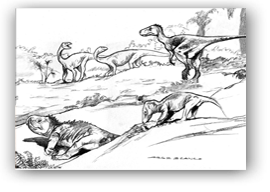
|
Triassic 'reptiles' from south Brazil
A series of 250 to 200
million years old rocks from Rio Grande do Sul, south Brazil,
has yielded one of the richest tetrapod faunas of Triassic age
worldwide. The PaleoLab people study several of these groups,
especially archosaurs and rhynchosaurs.
Artistic impression
of the Late Triassic of south Brazil |
|
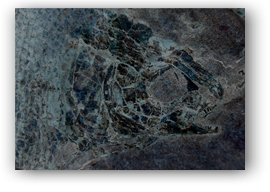
|
Permian Vertebrates
In Brazil, Permian (300-250 Ma) deposits abound in the Parnaíba and Paraná basins, which were (at the time) covered by large interior seas. The PaleoLab investigates some of the aquatic vertebrates of that epoch, including 'fishes' e 'amphibians'.
Semionotiform fish from the Pedra de Fogo Formation (Pastos Bons-MA) |
|
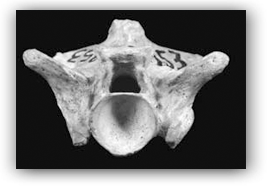
|
Fossil Squamata from South American Meso-Cenozoic
In South America, the Squamata, including lizards, amphisbaenians, and snakes, are found since the Lower Cretaceous. Our team investigates this clade, focusing on fossil lizards and snakes.
Holotype vertebrae of Colombophis spinosus |
|

